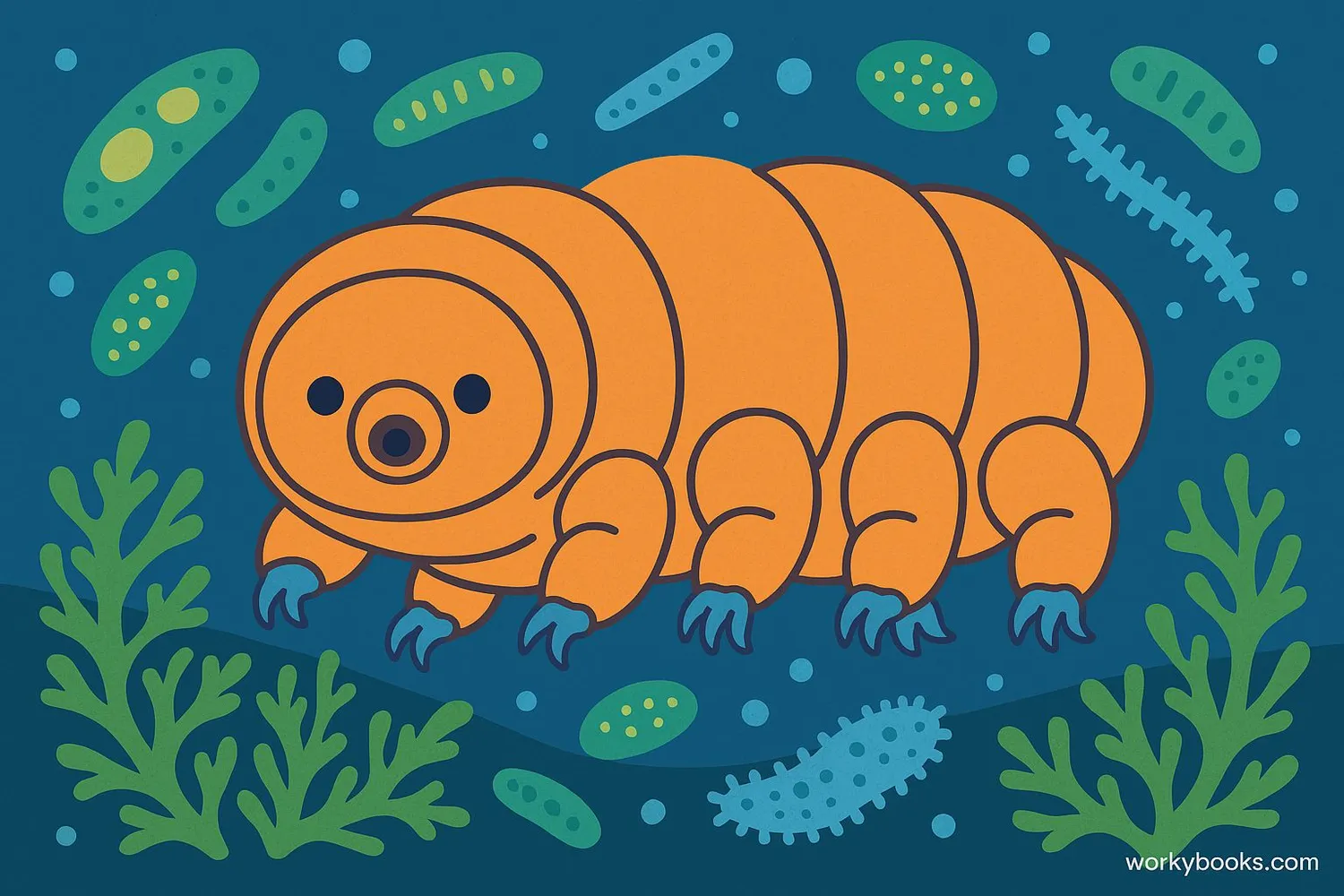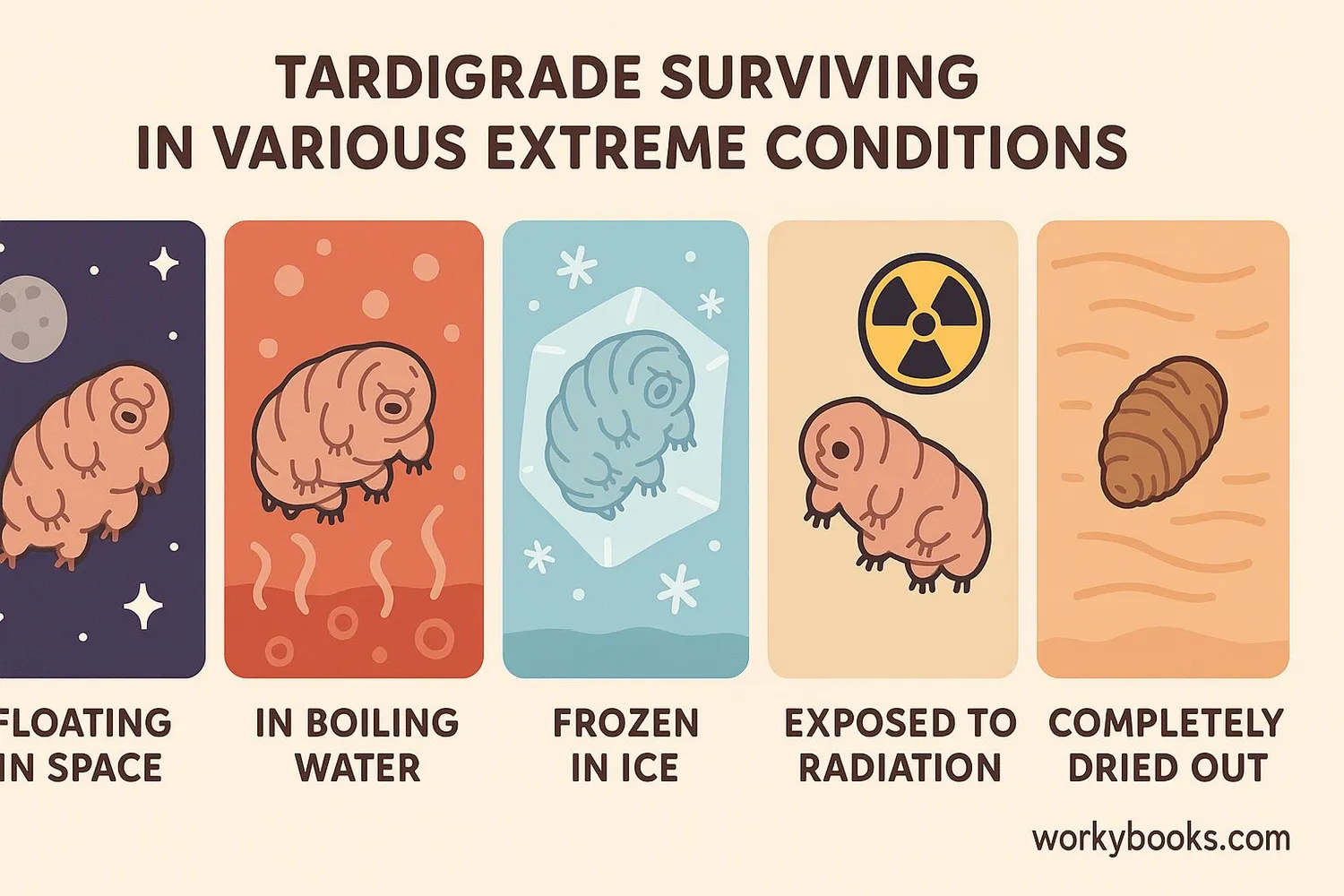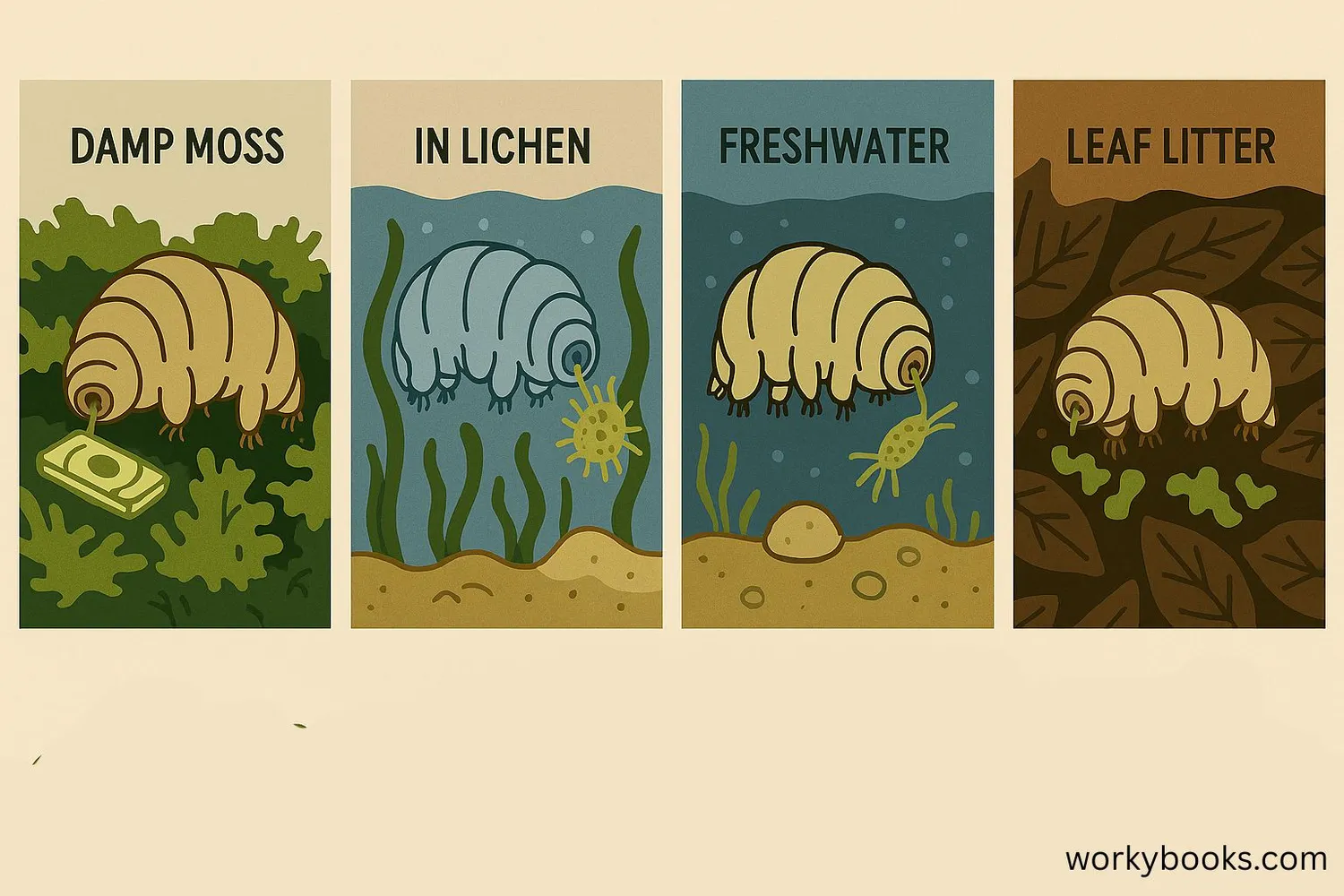Tardigrades - Definition, Examples, Quiz, FAQ, Trivia
Discover the incredible world of microscopic water bears that survive extreme conditions!
What Are Tardigrades?

Tardigrades, often called water bears or moss piglets, are microscopic animals that are some of the toughest creatures on Earth! These tiny organisms are usually about 0.5 millimeters long when fully grown - that's smaller than the tip of a pencil!
Despite their tiny size, tardigrades have complex bodies with eight legs, each ending in little claws. They have a segmented body and a mouth that can extend to suck nutrients from their food. Scientists have discovered over 1,300 species of tardigrades living in all kinds of environments around the world.
Discovery Fact!
Tardigrades were first discovered in 1773 by German pastor Johann August Ephraim Goeze, who called them "little water bears" because of their bear-like appearance under the microscope.
Amazing Survival Abilities

Tardigrades are famous for their incredible survival skills! They are extremophiles, which means they can live in environments that would be deadly to most other creatures. Here's how they survive extreme conditions:
Cryptobiosis
They enter a special state called cryptobiosis where their metabolism drops to 0.01% of normal
Tun Formation
They curl into a dry ball called a "tun" and can survive for decades
Special Proteins
They produce special proteins that protect their cells from damage
DNA Repair
They have efficient DNA repair mechanisms to fix damage from radiation
Tardigrades can survive:
• Extreme temperatures from -272°C to 150°C
• Pressures six times greater than the deepest ocean
• Radiation doses hundreds of times higher than would kill humans
• The vacuum of space without protection
• Decades without water
Space Survivors!
In 2007, tardigrades became the first animals to survive exposure to space vacuum and cosmic radiation during a European Space Agency mission.
Habitats and Diet

Tardigrades live almost everywhere on Earth! You can find them in:
Moss and Lichen
These are the most common habitats where tardigrades thrive
Freshwater
Lakes, ponds, and streams are home to many tardigrade species
Ocean Sediment
Some species live in marine environments on the seafloor
Tardigrades are mostly microscopic predators or plant eaters. Their diet includes:
• Plant cells from moss and algae
• Bacteria and other microorganisms
• Sometimes even other small tardigrades!
They use their specialized mouthparts to pierce plant cells or capture tiny prey and suck out the contents.
Backyard Science!
You might have tardigrades living in moss in your own backyard! With a microscope, you can find these amazing creatures in damp moss samples.
Tardigrade Knowledge Quiz
Test your knowledge about these amazing microscopic animals with this quiz! Answer all 5 questions to see how much you've learned.
Frequently Asked Questions
Here are answers to some common questions about tardigrades:
Amazing Tardigrade Facts
Discover some incredible facts about these microscopic survivors!
Ancient Survivors
Tardigrades have been around for over 500 million years! They survived all five mass extinction events on Earth, including the one that wiped out the dinosaurs.
Foreign DNA
Tardigrades have about 17.5% of their DNA from other organisms! This is because they're experts at horizontal gene transfer - incorporating DNA from bacteria, plants, and other microbes.
Radiation Resistance
Tardigrades can withstand radiation doses up to 1,000 times higher than what would be lethal to humans! They have special proteins that protect their DNA from damage.
Space Travelers
In 2019, an Israeli spacecraft carrying tardigrades crash-landed on the Moon. Scientists believe these microscopic organisms might have survived the impact, potentially making them the first Earth animals to live on the Moon!


